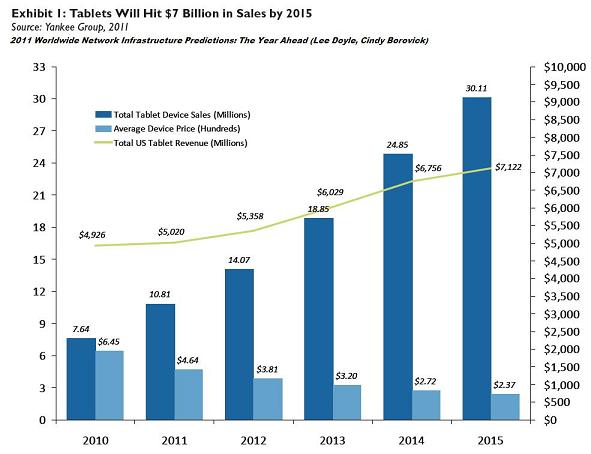Traditional Media and Print finds its savior in 2011. And that savior is the Tablet. Tablets will open the door for new possibilities, and more cost-effective opportunities and reach for their content and how it is consumed.
Tablets (thanks to Apple) have proven to be the perfect platform for content consumption; for reading, for video, for certain kinds of apps, and as important, for content distribution. Electronic content distribution via Tablets (and mobile) not only benefit the content creators and publishers but makes finding and buying, even subscribing to content (or services) so convenient that anyone can find, review and order a new book, magazine, newspaper or app/service just in seconds; for this, Tablets are second to none.
Tablets will be a major data (bandwidth) consumer, driving operator revenues but also adding stress to the network. But because Tablets are cousins of the smartphone (as opposed to PCs and Laptops), from the management and support perspective, the cost of support for Tablets should be similar to smartphones.
The Yankee Group predicts that Tablets will hit $7B in Sales by 2015 (that is, if the World doesn’t end on Dec 2012).

Apple has created the consumer Tablet space. Yes, some had tried before but failed, thus, Apple is the winner, the innovator, the leader. But Google and Android will play a big role in the Tablet space. Recently, Google released Android 3.0 Honeycomb, the latest version of Android that adds Tablets as member of the family; meaning developers can create Android apps that run across smartphones up to Tablets using the same development tools, and go-to-market with the same App Market, revenue share model and payment options as today, and even have their existing apps run on Honeycomb. Some new design and development concepts are introduced (YouTube) by Honeycomb to maximize the app experience across Android device types which now include Tablets.
Tablets will have a big impact on a number of verticals. In many ways, it will benefit areas looking to replace paper and areas looking to improve workflows and areas where rich-content (such as images and video) is important. Tablets will play an important role in the Health sector, the mobile workforce, sales (demos) and in-store salespersons using guided workflows to help customers, and of course, at home, all thanks to its form-factor, cost, media-rich capabilities, offline support, and ease of content and application distribution. And I can’t wait to see the apps that will intersect mobile with the connected TV. From Apple to Android-based Tablets, 2011 will be a big year for tablets (moving forward).
Tablets will not replace smartphones and Tablets won’t be as pervasive nor as personal as handsets. While Tablets and handsets will share some on the class of content and apps, Tablets will have its own class on which it will shine the most, its own sweet-spot; some mentioned above.
If you are a developer, you must consider Tablets as a top platform starting in 2011.
ceo
Pingback: Mobility in 2011 | About Mobility